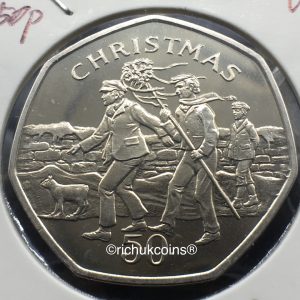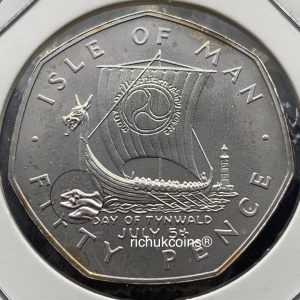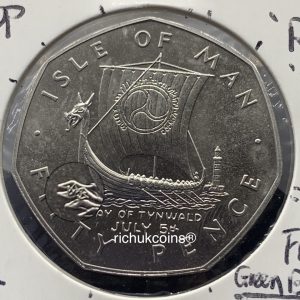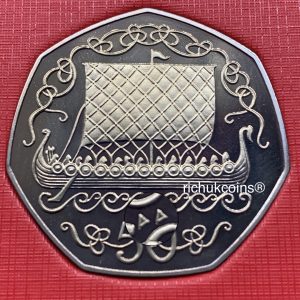Published on
Last Updated on:
Part II
Here it comes Part II where a new part introduces how did the Pobjoy Mint make a start of the IOM Xmas 50p at the beginning of the year 1980, and a 2nd time improvement happened in 1994. We have talked many things in Part I (if you have missed is, please click here).
- 1980 Christmas 50p coin from the Isle of Man — UNC<#1>


The 1980 UNC<#1>, BB, is the most strange one you have ever come across at the beginning of 1980, not only the BB diemark associated with but also the lowest standard in grade in a row. This one breaks the rule of prefix B equivalent to prooflike. However, it is only the one in the series.
- 1980 Christmas 50p Coin from the Isle of Man — UNC<#2>


The 1980 UNC<#2>, BB, in contrast to the 1980 UNC<#1>, is much better in terms of finish standard. A light frosting effect and the likely mirror-liked field can be seen.
- 1980 Christmas 50p Coin from the Isle of Man — UNC<#3>


The 1980 UNC<#3>, BC, in contrast to the 1980 UNC<#2>, is better, and great than the 1980 UNC<#1>. Also, this type of coins is named Diamond Finish (DF) officially. First impression you have is a bit more whity and easily toned in nature condition. The mirror-liked field it is getting to see clearly.
- 1980 Christmas 50p Coin from the Isle of Man — UNC<#4>


The 1980 UNC<#4>, BD, single digit D was used for striking silver metal coin.
- 1980 Christmas 50p Coin from the Isle of Man — UNC<#5>


The 1980 UNC<#5>, BE, single digit E was used for striking silver metal coin as well.
Things are getting more complicated beyond this point. First, mule coins exist. Second, reverse has many versions even many variants in a single version. Last, no any record for the Xmas 50p coin it has in place.
- 1980 Christmas 50p Coin from the Isle of Man — UNC<#6>


The 1980 UNC<#6>, BF, has squared-rim especially on the obverse side.
- 1980 Christmas 50p Coin from the Isle of Man — UNC<#6.1>


The 1980 UNC<#6.1>, BF, has the frosting effect very clear.
- 1980 UNC<#6>'s reverse vs. 1980 UNC<#6.1>'s reverse


Credit: richukcoins®
- 1980 Christmas 50p Mule Coin from the Isle of Man — UNC<#6.2>


- 1980 Christmas 50p Mule Coin from the Isle of Man — UNC<#6.3>


At this point, you have seen many different variants including Mule coins from 1980. It concludes that nobody knew what would be the best finish for the IOM Xmas series in line with no proof coins in base metal at the beginning of the Xmas venture. One thing is clear that the young Pobjoy Mint ltd was keen to make and/or invent something new in numismatic world at age of 15 years really. Another the owner of the Mint shared the things happened behind the closed door externally with collectors as well.
Next, the turning point it shows in 1994, and was last for a consecutive 3 years period. The pattern was like AA-ND and the first introduction of No Diemark (ND) coin in the Xmas 50p series.
- 1994 Christmas 50p Coin from the Isle of Man — UNC<#1>


- 1994 Christmas 50p Coin from the Isle of Man — UNC<#3>


Note: UNC<#1> indicates uncirculated coin that has struck once only, and associated with AA normally. UNC<#3> is a circulating commemorative coin that is done by twice striking with polished dies and specially prepared blanks, and it has ND eventually. UNC<#2> is something between UNC<#1> and UNC<#3> and sometimes with and/or without BB diemark. UNC<#4> and beyond is more like experiments. The pattern is like AA-BB-ND in general. Once you have had an understanding of the IOM diemarks, perhaps you are going to see and enjoy how wonderful the IOM xmas series is before 2010. A third grading company like NGC or PCGS gives a mark PL+ on coin made up to 1998 and MS+ DPL/PL for 1999 and onwards. This info shows how coin quality switched off after 1999.
#The End

























